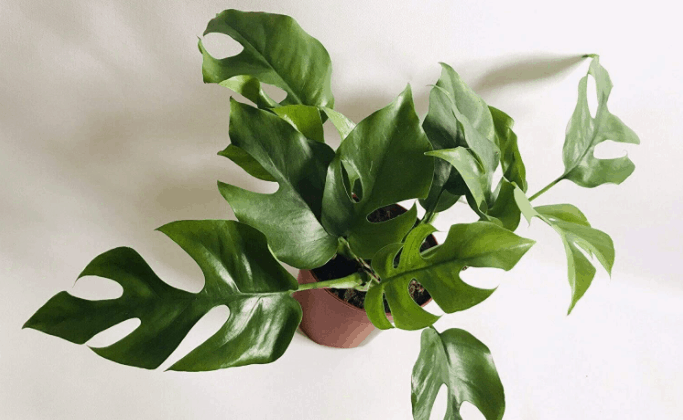- How to Propagate Monstera Guide: The Three Ways to Succeed - September 17, 2021
- Escargot Begonia: Why Is The Rex Begonia So Rare? - August 31, 2021
- Rieger Begonia: When You Can Expect The Hiemalis Begonia To Flourish - August 31, 2021
This is a unique plant that hails from the lush rainforests of Southeast Asia, particularly Thailand and Malaysia. There is no need to create a fussy maintenance routine to care for Monstera Minima; in fact, it will maintain its lovely features even during short periods of neglect.
How to Identify Monstera Minima (Rhapidophora Tetrasperma)
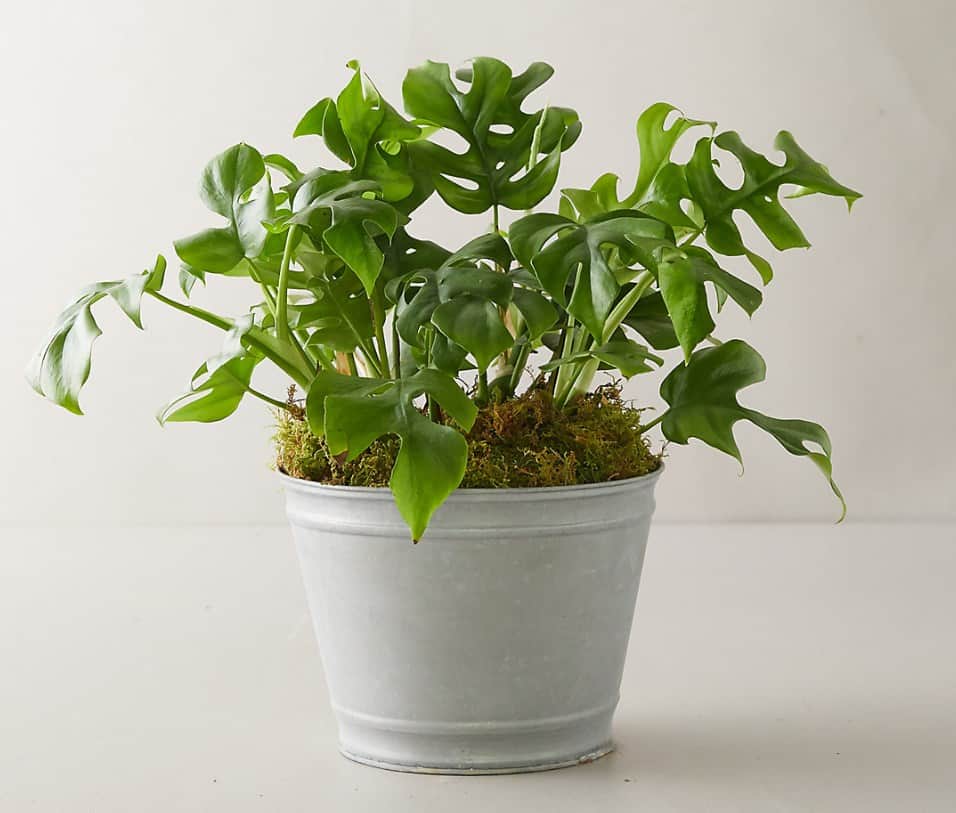
While this is not a true Monstera plant, it does have a few features that resemble the Monstera family. These features are its long, oblong leaves that grow with holes in them. Another key feature that can help to identify Monstera Minima is that it grows sideways in a vining pattern.
How to Grow Monstera Minima from Seed
Growing one of these plants from seeds can take many months, but the effort is worth it. While it does take a lot of patience to get a mature plant, the steps to do so are simple.
- Purchase seeds from a quality seller
- Soak the seeds in water for 24 to 48 hours
- Set the seeds in a container filled with sterilized soil
- Water the soil so that it is moist but not soggy
- Cover the container with plastic wrap
- Once the seeds have sprouted, acclimatize the seeds to open-air
- Once the plants are healthy and established, report them in a larger container
How to Propagate Monstera Minima
The easiest way to grow a new Monstera Minima is via stem cuttings. The steps for doing this are as follows:
- Using a sterile cutting utensil, cut off a healthy stem that includes a leaf and a node
- Set the stem in a container filled with water
- Set the container in a warm place that gets bright but indirect sunlight
- Change the water every other week
- Once roots have been established on the stem, plant the stem in a container filled with potting soil that contains a mixture of perlite
- Water the potting soil and keep it moist but not soggy
Monstera Minima Growing Conditions
Since this plant is a native of rainforests, it prefers an environment that is warm and humid. It will grow far better when it is set in a place with at least 50% humidity. On top of this humidity requirement, Monstera Minima requires temperatures that are no lower than 55 degrees Fahrenheit.
It also needs a place to attach itself so that it can grow as a healthy vine. Moss poles are ideal for using with these plants.
How to Plant Monstera Minima
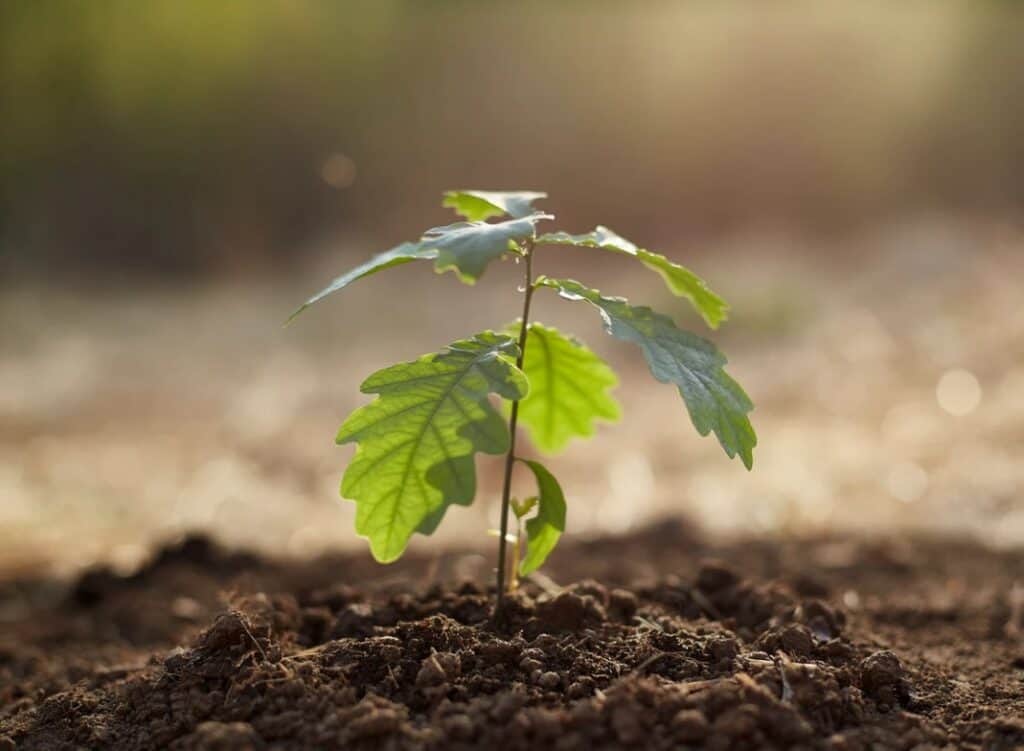
This plant can tolerate a little time being pot-bound; however, it does grow better when given plenty of soil and space for its roots to grow. Ideally, it is best to replant Monstera Minima every 2 to 4 years depending on how fast the individual plant grows during that time. The new container should be two inches wider in diameter than the plant’s previous container.
Monstera Minima Potting & Soil
The soil that will help Monstera Minima to grow healthy and strong should contain peat moss, compost, and perlite or bark chips, gravel, or pumice. This plant needs soil that drains well but is rich in organic material, such as this homemade potting mix recipe. It is necessary to remove and replace potting soil that is in a plant container every other year. This will ensure that the soil has plenty of nutrients in it to feed the plant.
Monstera Minima Water Requirements
It is best to check the soil around the Monstera Minima plant before watering it. If the top 1/3 of the soil is dry, it is okay to water the plant at that time; however, if the soil is still moist from the previous watering, it is best to wait a few days more.
A great way to track plant-watering schedules is through a plant watering app. This will prevent overwatering and send reminders for when the plant needs another drink.
Monstera Minima Light Requirements
This plant likes a lot of sunlight, so long as it is indirect. Direct sunlight will cause Monstera Minima to dry out and its leaves to get sunburnt.
Insufficient amounts of sunlight will cause its leaves to yellow, its growth rate to slow, and its vines to get leggy. Therefore, moderation is best when it comes to Monstera Minima. To be sure that the plant is getting the appropriate amount of light, use a light meter to test indoor light capacity.
Best Monstera Minima Fertilizer
This plant does benefit from a few feedings throughout the year. Apply the fertilizer to the plant every four months. The best type of fertilizer to use on a Monstera Minima is one that is slow releasing and balanced for houseplants. Joyful Dirt offers a gentle and easy-to-use fertilizer for all types of houseplants. It is also safe to use around pets and kids.
Best Monstera Minima Companion Plantings
Since this plant grows in rainforest environments, it is typically surrounding by other plants. The best way to present Monstera Minima is alongside one or several companion plants that also hail from tropical spaces. The following three options are excellent choices to set next to a Monstera Minima because they will all look great together and will be easy to care for as well.
Monstera Adansonii
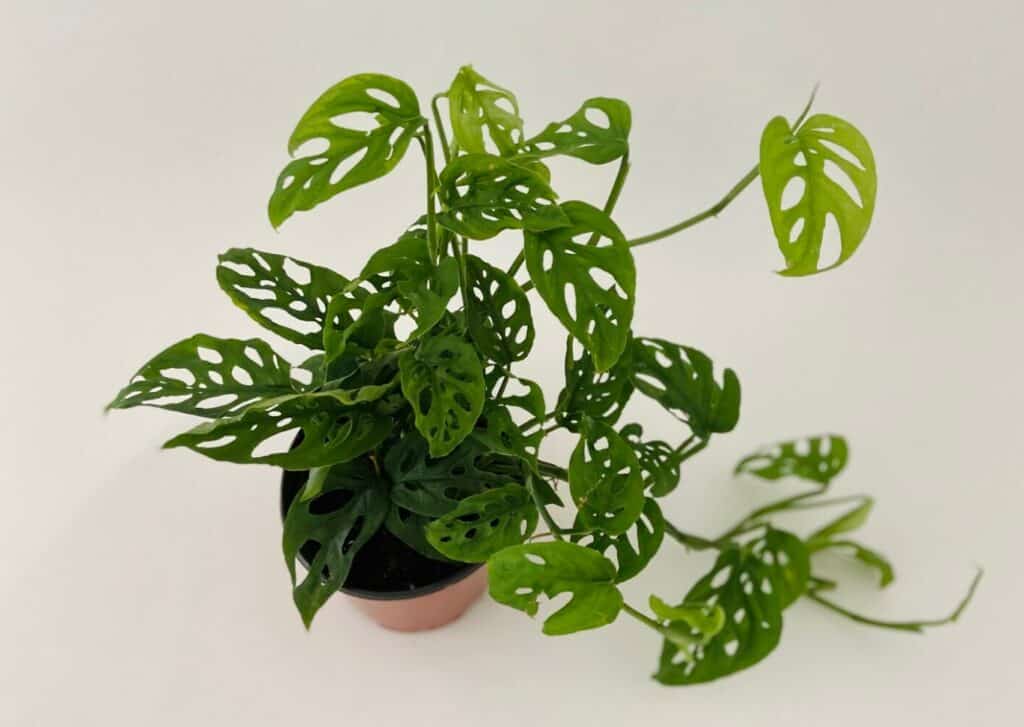
This is a true Monstera plant. While it is a native of the jungles of Central and South America, it still has plenty in common with Monstera Minima.
Common Ground
- They both grow with holes in their leaves
- They both grow as vines
- They both enjoy indirect sunlight
- They both like soil mixed with peat moss
- They both like moist but not soggy soil
- They both prefer warm, humid air
- They both have the same fertilizer requirements
Pros:
- It has a lot in common with Monstera Minima
- It is easy to care for
- It is easy to propagate via stem cuttings
Cons:
- It is toxic to animals
- It may need pruned from time to time
- It attracts pests such as mealybugs, spider mites, and whitefly
Philodendron Bipinnatifidum
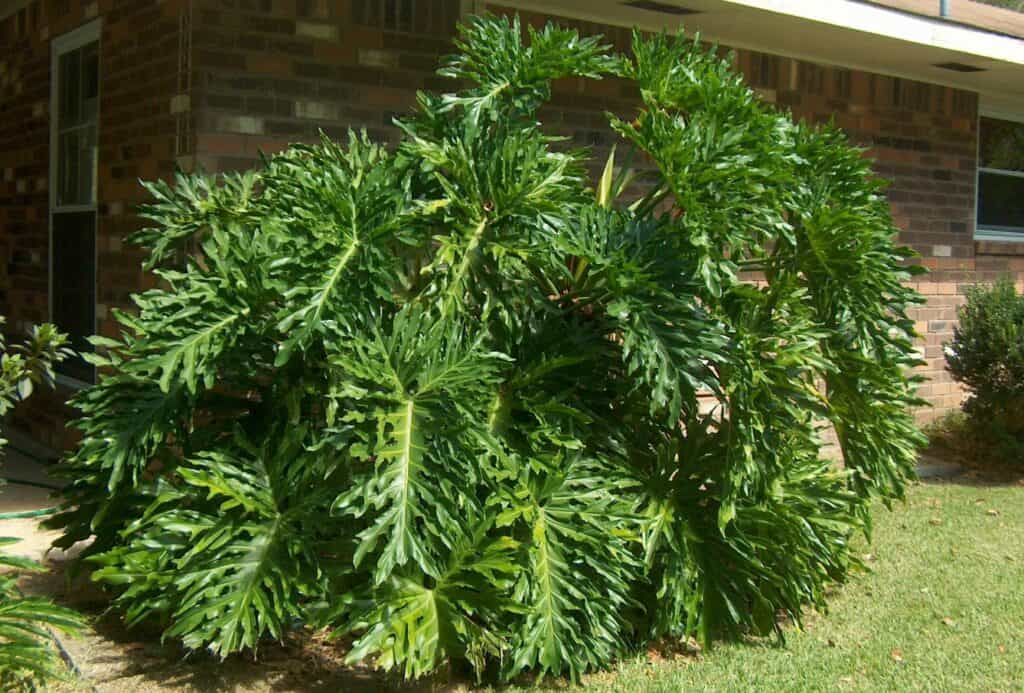
This is a plant with full, luscious, and beautiful leaves. It is also native to the tropical regions of South America. Its tropical heritage is why it is a great option to use as a companion for a Monstera Minima plant.
Common Ground
- They both enjoy plenty of indirect sunlight
- They both like soil mixed with peat moss
- They both like moist but not soggy soil
- They both prefer warm, humid air
Pros:
- It has a lot in common with Monstera Minima
- It is easy to care for
- It is easy to propagate via stem cuttings
Cons:
- It is toxic to animals
- It requires a balanced fertilizer during its growing season
- Its leaves get dusty when grown indoors
- It attracts pests, such as spider mites, fungus gnats, and aphids
- It is susceptible to root rot
Anthurium Clarinervium
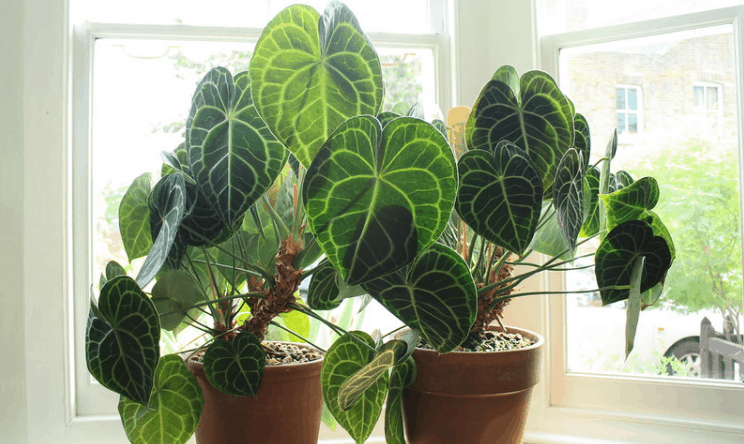
The leaves of this plant are some of the finest found in nature. These leaves feature a stunning green color and delicate veins that are enthralling. A plant like this will make a fascinating focal point in an indoor tropical garden and as a companion to a Monstera Minima.
Common Ground
- They both enjoy plenty of indirect sunlight
- They both like soil mixed with peat moss
- They both like moist but not soggy soil
- They both prefer warm, humid air
Pros:
- It has a lot in common with Monstera Minima
- It is easy to care for
- It is easy to propagate via stem cuttings or root division
Cons:
- It can get a buildup of mineral salt that will need cleaning out every three to four months
- It is susceptible to root rot
Monstera Minima Diseases and Common Problems
While this plant is typically very easy to care for, it can face a few pests and problems. These include:
- Spider mites
- Root rot
Monstera Minima Treatments and Maintenance
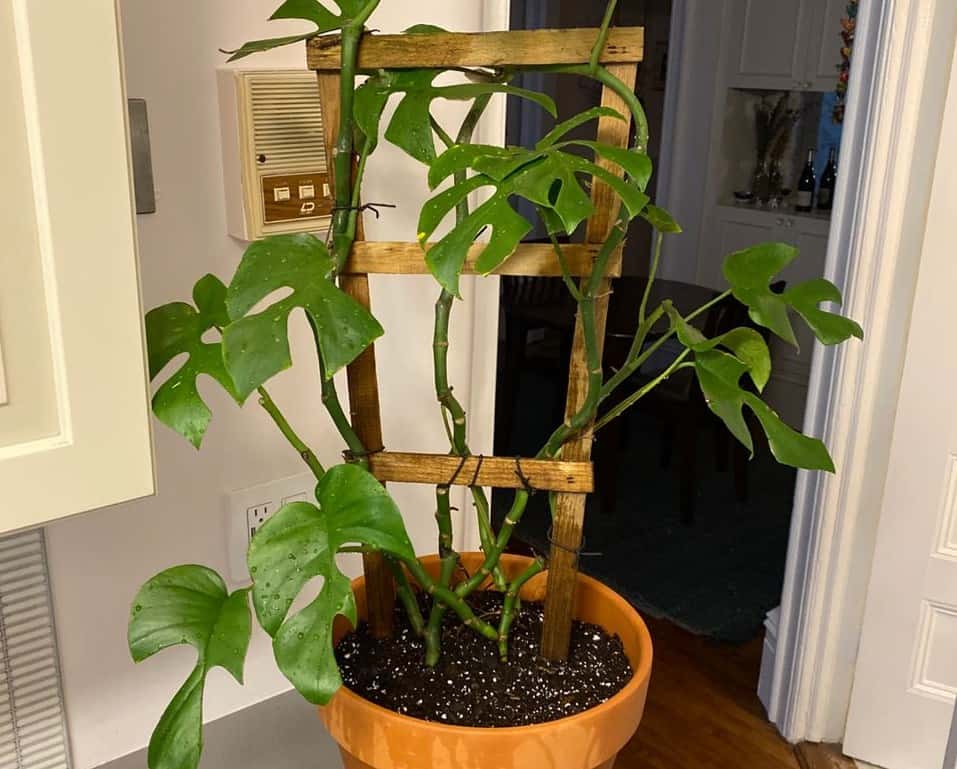
While this plant does face a couple of problems, they can be dealt with. It is best to treat the plant as soon as the symptoms of infestation or a problem appear so the plant has a chance to survive.
Spider mites
Evidence of a spider mite infestation will show up as white webbing on the leaves and stems. Sometimes the tiny insects will even be visible crawling around the plant. To treat this type of infestation, fill a spray bottle with a quart of warm water, 1 tsp. of dish soap, and 2 tsp. of neem oil. Use this mixture to spray and wipe the leaves and stems of the plant clean. It may be necessary to repeat this process several times to rid the plant of all the insects.
Root rot
It is best to prevent this problem from happening by learning the proper way to water a Monstera Minima plant. If, however, root rot does occur, follow these steps:
- Remove the plant from its container
- Wash off the soil from the roots
- Cut off any roots that have become rotten
- Replant the plant in a clean container with fresh soil
- Do not water immediately
Where to Buy Monstera Minima Seeds Online
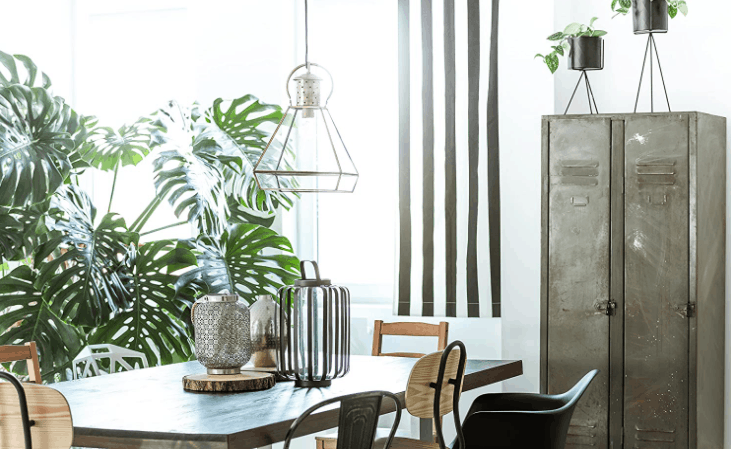
When it comes to purchasing Monstera seeds, online is the way to go. Sellers are easy to find and many of them offer buyers the opportunity to ask questions and read reviews by other buyers. Some of the best online seed shops are:
Where to Buy Mature Monstera Minima Plants Online
It is not only possible to purchase Monstera seeds online, but also mature plants can be bought online and delivered directly to a home or business. The following online shops offer great selections of these plants.
FAQs
Question: Is Monstera Minima Toxic?
Answer: Yes, unfortunately, this plant is toxic when ingested by pets. Symptoms of poisoning from one of these plants includes:
• Swelling of the mouth
• Drooling
• Vomiting
If an animal shows any of these signs, it is recommended that a veterinarian be consulted or Animal Poison Control be contacted.
Question: How Large Will Monstera Minima Grow?
Answer: In nature, this plant can grow up to 12 feet high; however, it will only grow up to 5 feet when it is grown indoors.
Question: Should Monstera Minima be Pruned?
Answer: This plant can benefit from pruning but it is not required unless there are leaves and stems that look scraggly or dry. Extensive pruning will create a plant that looks bushy rather than like a vine.
Question: What Are the Signs that a Monstera Minima Plant is Not Getting Enough Humidity?
Answer: Since this type of plant needs plenty of humidity to grow and look well, it is important to know the symptoms of a plant that is not receiving enough. If the leaves of a Monstera Minima are beginning to curl, this is the main sign that the plant needs more moisture in its air environment.
To provide extra humidity for a Monstera Minima, set it in a bathroom window where the moisture from the shower can reach it. It is also possible to mist the leaves with a spray bottle filled with water. Another great option is to set the plant next to a humidifier or on a pebble tray.
Question: Is Monstera Minima a Good Plant to Set in a Hanging Plant Container?
Answer: This type of plant is an excellent choice for hanging baskets and planters. Monstera Minima plants love to grow trailing vines so placing them on a high shelf or in a hanging plant container offers them a way to grow long and healthy vines. They also look lovely when allowed to grow in this manner.
Monstera Minima is a wonderful plant to include in tropical landscapes, indoor gardens, and on outdoor patios. It will grow long trellising vines that are sure to please the most ambitious of gardeners. This plant is set up for success because of its easy-going nature and pleasant looks. When it comes to gardening for beauty’s sake, this is a plant that everyone will want to include; it is just that stunning.
Research Citations

